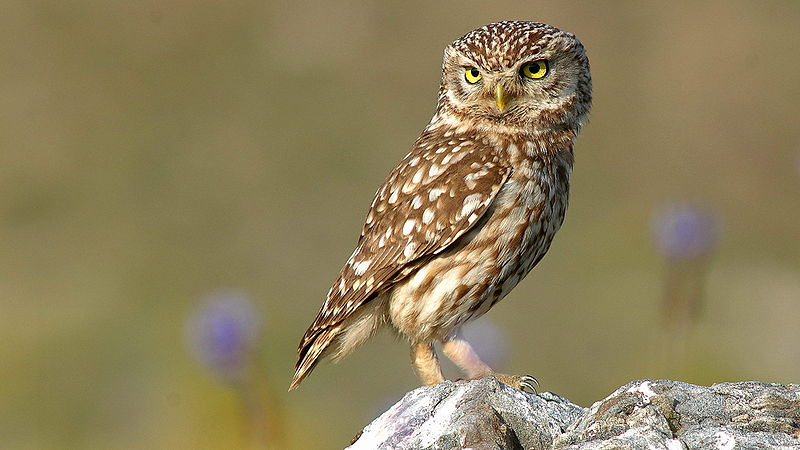
Little Owl. Photo: By Trebol-a (Own work) [CC-BY-SA-3.0 (http://creativecommons.org/licenses/by-sa/3.0)], via Wikimedia Commons
Little Owls were successfully introduced into the UK at Lilford Hall, just down the road from me here in east Northants, by the 4th Baron Lilford in 1889; on St George’s Day, his gamekeeper found a little owl on a nest.
[registration_form]
The article in the very first volume of the journal British Birds (WITHERBY, H.F. and N.F. TICEHURST. 1908. The spread of the Little Owl from the chief centres of its introduction. Brit. Birds 1: 335–342) says that they were breeding in Kent ten years before Lord Lilford’s Northants release. The first attempt at establishing Little Owls in Britain was actually in Yorkshire at Walton Park near Wakefield in 1843 when Charles Waterton released five Little Owls that he had brought from Rome the previous year. These vanished without establishing themselves. They were also released in Norfolk and Sussex in the 1870s but these failed too. E G B Meado-Waldo released dozens of birds between 1874 and 1900 in Kent (between Tunbridge Wells and Sevenoaks) and they first nested in 1879 and were well established and widespread by 1900. The most famous introduction was near Oundle in Northamptonshire where Lord Lilford (Thomas Littleton Powys, 4th Baron Lilford 1833 –1896) had been releasing birds for several years and they first bred in the wild in Northants in 1889, ten years after they first bred in Kent. By 1892 they had spread to Woburn, 44 miles to the south, and in the next few decades they colonised much of England, Wales and eventually bred in Scotland in the 1950s.
I have researched the Little Owls colonisation and noted that the colonisation push north and west tended to accelerate during the first and Second World War, possibly due to the gamekeepers being away fighting!
Roy – many thanks for your first comment here. That’s interesting.
Proof that not all new introductions are invasive or destructive, these are complementarity to our wildlife.
Im confused about why we accept some introductions as harmless..and others as a problem. Would this have been allowed today?..Was there a history of natural spread to the UK?…
Little Owl are in the British fossil record.